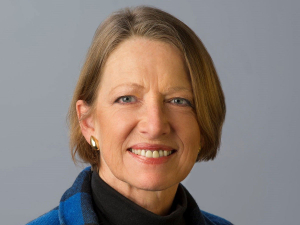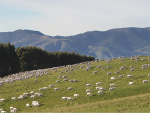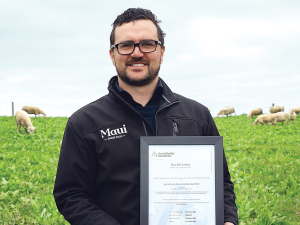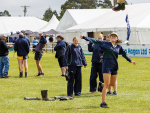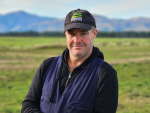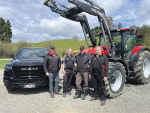OPINION: Rock dust is being touted as the new carbon sequestration saviour.
Alongside trees and soil, or even deep injection, the new star is enhanced rock weathering (ERW). All you need to do is grind up the local source of suitable rock (basalt or dunite, for instance) and spread it on your soil.
Beyond the hype (google magic dust...) from overseas, things are rarely that simple.
At the University of Waikato, Professor Louis Schipper is involved in research led by Rutherford Fellow Terry Isson examining the potential of ERW in the Bay of Plenty. "The theory seems sound," he says. "When some minerals naturally weather, carbon dioxide is captured as bicarbonate that over long-time frames leaches to the ocean."
This natural process has been estimated by the Intergovernmental Panel on Climate Change to remove approximately 1 gigatonne of the global atmospheric carbon dioxide a year. In the ocean it can counteract 'ocean acidification' and, if precipitated, can be sequestered in limestone or dolomite on the ocean bed.
Grinding rock accelerates the rate of weathering.
A review of ERW literature for the Ministry for Primary Industries, senior author Associate Professor Peter Almond, Lincoln University was published in 2024. From field studies (mostly large pots and lysimeters) carbon dioxide sequestration was reported at 0.4-8.6 tonnes per hectare in the timeframes considered (mostly less than a year, with an outlier at 15 years) with application rates of 50-200 tonnes per hectare of rock. The studies involved a range of rock types, grain sizes, soils, moisture regimes, and methods of quanitifying carbon dioxide draw down over different time periods. The results indicated drawdown rates (on a per ha basis) that varied by three orders of magnitude.
This variability emphasises the real challenge.
Not 'just any' rock will have an effect. Further, basalt and dunite capture different amounts of carbon dioxide through time.
Professor Schipper says that the actual rates of weathering/capture are hard to measure in the field. This means that scientists don't yet know whether the capture will be fast enough to make a difference in the time frames that are the current focus (by 2050, for the Paris Agreement, for instance).
Dr Col Gray, Ravensdown's senior scientific officer, has also examined the potential for ERW in New Zealand and points out that there might be agronomic benefits and limitations associated with applying silicate rocks to soils. "Using silicate minerals instead of agricultural lime to increase soil pH could replace the use of lime, which is a source of agricultural carbon dioxide emissions."
The liming effect is, however, smaller than with traditional lime. Overseas research suggests that 30 to 40 tonnes of basalt would be needed to create the same liming effect as one tonne of the calcium carbonate generally used.
This also means that putting large quantities of basalt on the soil to achieve carbon dioxide draw down, such as the 200 tonnes per hectare mentioned earlier, could have the same liming effect as 5 tonnes of lime, which might or might not be desirable.
Basalt does contain a range of essential plant nutrients (Ca, Mg, Fe, K, P, Mo) and their release during the enhanced weathering could help support plant growth.
Professor Schipper, who was on sabbatical in Ireland last year, has seen an increase in international activity around ERW. "There are a lot of start-up companies," he says, "but they really need to quantify capture rates. And then we need the verification methods to be able to validate the capture rates."
Dr Gray agrees. He has noted various verification frameworks being released, just as there were with trees and soil. "The value of the carbon capture will be critical to making progress. Could it become an extra income stream for pasture soils? And how much would it cost to mine, process deliver and spread?"
The research is underway, and in the meantime farmers can ask enthusiastic sales staff the usual question: where is the research for New Zealand in the temperature and rainfall regime on the soils I'm farming? What data do you have that will support improvements in the agricultural system that I am operating?
Rock dust, magic dust - or is it fairy dust? Time will tell - as it always does. In the interim, all potential tools for carbon sequestration need exploring.
Dr Jacqueline Rowarth, CNZM HFNZIAHS, Adjunct Professor Lincoln University, is on the board of directors of DairyNZ, Deer Industry NZ and Ravensdown, and of the World Farmers' Organisation Scientific Council.





